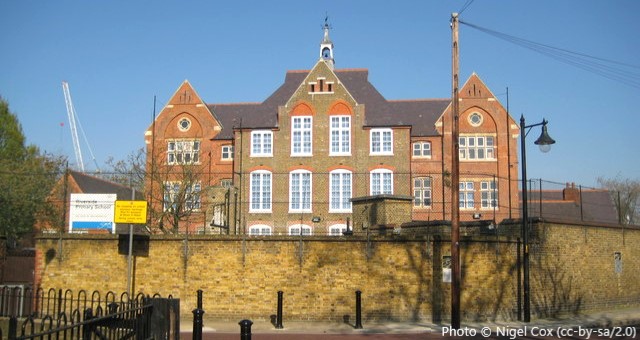Soil Erosion 101: Essential Facts and Tips for Kids

Soil is one of the most crucial resources on our planet. Without it, plants wouldn’t grow, and we wouldn’t have food or clothing. However, soil erosion is a major problem that affects crop yields and contributes to numerous environmental issues. Kids need to learn about soil erosion and its impact on the environment to understand how to take care of this valuable resource.
This quick guide offers essential facts and tips for kids to help them understand what soil erosion is, its causes, and how they can help prevent it. We’ll explore the causes of soil erosion, such as deforestation, overgrazing, and construction activities, and how they impact soil health. This guide will provide easy-to-understand solutions for preventing soil erosion, including the importance of planting trees, using mulch, and practicing responsible farming techniques.
Click here to watch a video about soil erosion: erosion meaning.
1. Soil erosion is a natural process.
Soil erosion is a natural process that happens when wind or water wears away the topsoil. Topsoil is the layer of soil that has the most nutrients and is essential for growing plants. When the topsoil is eroded, it can cause many problems. Plants may have a hard time growing, which can ultimately cause a decrease in food production. Additionally, soil erosion can contribute to flooding, as the eroded soil reduces the soil’s ability to absorb water.
2. Deforestation, construction, and farming can speed up soil erosion.
Human activities like deforestation, construction, and farming can speed up soil erosion. Deforestation refers to the clearing of forests for commercial or other purposes, and it can greatly disrupt the natural balance of soil, water, and nutrients that plants and animals rely on. When forests are cut down, the soil is left exposed to the elements, and rainfall can wash it away, which may cause landslides, and harm downstream areas. Similarly, construction activities like building roads, mining, and quarrying can disturb the natural landscape and reduce the soil’s ability to absorb water, leading to increased runoff and soil erosion. Farming practices such as overgrazing, excessive tilling, and leaving land untreated after harvest also exacerbate soil erosion, leading to lower crop yields, water pollution, and land degradation.
3. Soil erosion can cause problems like reduced plant growth, water pollution, and even landslides.
Soil erosion can be a major problem for the health of our environment. When soil is eroded, it is taken away from one place and deposited in another. This can cause a range of issues, including reduced plant growth. Additionally, soil erosion can cause water pollution, as the soil may contain harmful chemicals or pesticides that can seep into nearby water sources. Finally, soil erosion can even lead to landslides, which can be incredibly dangerous for people and animals living in the area. It’s important to take steps to prevent soil erosion and protect our environment for future generations.
4. Prevent soil erosion by planting ground cover, using mulch, and avoiding overgrazing.
Soil erosion can be a major problem, but there are ways to prevent it. One of the most effective ways is to plant ground cover. Ground cover plants help hold the soil in place and provide additional root systems that can help keep the soil together. Another helpful technique is to use mulch. Mulch can help keep the soil moist and prevent it from drying out, which can contribute to soil erosion. Additionally, avoiding overgrazing can help prevent erosion. When animals graze too heavily on grass and vegetation, they can remove too much of the protective cover that keeps the soil in place.
5. Terracing, contour plowing, and other sustainable farming techniques can also help prevent soil erosion.
Terracing, contour plowing, and other farming techniques can help prevent soil erosion. Terracing refers to the building of steps or terraces on a hillside to create farming plots. This technique helps slow down the flow of water, giving it time to soak into the soil rather than running straight down the hill. Contour plowing is another technique that involves plowing across the slope of a hill rather than up and down. This method helps slow the flow of water down the hillside and prevents it from carrying away large amounts of soil. Other farming techniques that can help prevent soil erosion include crop rotation, cover cropping, and reduced tillage.
6. Help prevent soil erosion by conserving water, recycling, and reducing your use of plastic.
Soil erosion is a serious problem that affects both our environment and our communities. Fortunately, there are ways we can all help prevent erosion and protect our soil. One of the most effective ways is to conserve water. When we use water wisely, we can reduce the amount of runoff and soil erosion that takes place. Another important step is to recycle, which reduces waste and pollution while conserving natural resources. Finally, we can all do our part to reduce the amount of plastic we use. Plastic does not biodegrade and can often end up in our waterways, leading to pollution and damage to our soil and environment.
7. Destructive natural events like hurricanes and wildfires can also contribute to soil erosion.
Destructive natural events such as hurricanes and wildfires can have a severe impact on soil erosion. When a hurricane or a wildfire occurs, the top layer of the soil that contains organic matter and nutrients is often washed or blown away, leaving behind barren ground that is easily eroded. When soil erosion occurs in these situations, it can lead to flash floods, mudslides, or even landslides. Additionally, the loss of plant cover due to fires or storms can make it difficult for the soil to hold water and prevent further erosion. It is essential to take steps to control soil erosion and maintain healthy soil ecosystems to prevent the devastating impact of natural disasters.
In conclusion, soil erosion may seem like a dull and complicated topic, but it is vital to understand its causes and effects. By being mindful of our everyday actions and taking steps to prevent soil erosion, we can help preserve our environment and food sources. Educating kids on this subject, enabling them to take responsibility for their actions, and providing them with the tools and knowledge to make a difference is fundamental in ensuring a sustainable future. Let’s all do our part in protecting the soil for generations to come.












